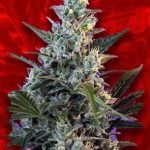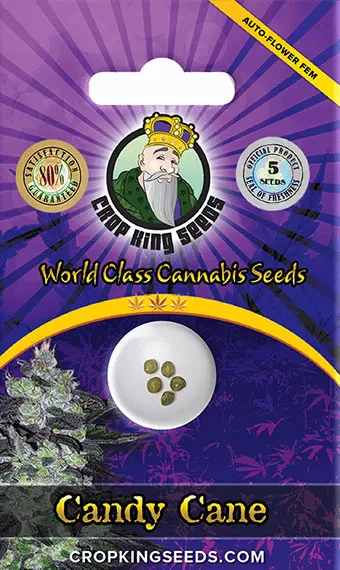The forward march of cannabis legalization has spread throughout much of North America. As more and more Americans become increasingly exposed to the weed industry, they’ve also come to learn the intricate benefits that come alongside cultivation.
Growing indoors can be a great way to spend time on something you are passionate about while cultivating a plant fit to meet your wellness and recreational needs. Indoor gardening can be a challenge, especially for newcomers to the field, and that’s why a properly planned routine is of the utmost importance.
Before we dive into our favorite website to buy marijuana seeds online, we must first learn how to cultivate weed from the comfort of home.
Grow Cannabis With the Right Equipment
Cultivating isn’t as simple as the name “weed” would imply. While anyone can visit a weed seed bank, it takes time and skill to turn those seeds into a plant worth harvesting. To take advantage of the 24/7 growing climate that indoor gardening allows, potential cultivators, need to lay their hands on the right equipment.
When growing indoors, our goal is to provide our marijuana plants with light, nutrition, and the appropriate structural tools for growth. Let’s look at each section one by one to prepare you for your journey.
Find a Dedicated Growing Space
Plants require plenty of space to grow to their proper size. Once grown, marijuana plants are hard to move and relocate, so the ideal location will be one that can handle your plants from seed to harvest. Keep in mind that weed plants also develop quite an odor during flowering, so it is of the utmost importance to have a way to direct smell from your property.
There are a few areas of concern that must be addressed when selecting an indoor growing space for your autoflowering seeds.
- Room for Growth — plants can grow up to 13 feet in height, proving that gardeners must account for significant space. Find a room with a tall ceiling so your plants have the space they need to grow without overshadowing one another.
- Stay Away From Carpet — Not only do you want to avoid carpet for sanitary reasons, but you want to avoid carpet to help your plants grow safely. Carpeting can become ground zero for all sorts of pest infestations. Pests are the #1 bane of indoor marijuana-growing enthusiasts.
- Allow for Ventilation — The best growing room will also offer ventilated outlets to keep temperature and odor under control. Consider vent accessibility as well as any potential windows for ventilation when selecting a room to grow cannabis.
- Space for Equipment — Finally, you’ll need space dedicated to your growing equipment. From lights and fans to nutrients and reservoirs, your room is better served with additional organizational space.
- Tent or No Tent? — Indoor growers often use grow tents, or dark rooms, to cultivate within a tight and enclosed space. Grow tents provide light reflecting benefits as well as odor control. Growing in a tent can be a great way to keep your grow sealed away from public view, though space can become restrictive and heat can become an issue.
When selecting an indoor grow room to design your space, take into consideration the number of plants you plan on raising. Look at your state’s legislation regarding the legal cultivation of marijuana to ensure compliance with local and federal law.
Get Quality Cannabis Seeds
Opt to buy seeds from a marijuana seed bank to ensure the quality and authenticity of your plants. When purchasing from a seed bank, you will have access to genetic information as well as various certificates to ensure the quality of your purchase. Seeds can also be found within dispensary purchases, though these seeds are not always viable and are often referred to as bagseed.
- Autoflowering Seeds — Autoflowering seeds will automatically switch from vegetative growth to their flowering stage after roughly two to four weeks of cultivation. Autoflowering seeds are easier to work with even though the yield tends to be smaller.
- Feminized Seeds — Harder to tend but ultimately more rewarding, feminized seeds offer larger yields with often more potent flower production.
Picking Your Grow Lights
To emulate outdoor growth in our indoor grow room, we must accommodate for the sun, which is not an easy task! To bring enough light to your plants, you are going to need more than just a large window.
Cannabis plants need roughly 18 hours of light per day when they are in a vegetative state, while they need 12 hours of light per day while blooming. There are a few different methods to deliver light to your plants.
- HID Lights — High-intensity discharge lights are considered the industry standard due to their output, efficiency and overall value. More expensive than fluorescent lights and less efficient than LED lights, HID lights are available in Metal Halide and High-Pressure Sodium varieties. Metal Halide provides a blueish-white tint for vegetative growth while HPS bulbs produce red-orange light for flowering.
- Fluorescent Lights — Less expensive than HID lights, fluorescent grow lights are ideal for small-scale growers due to their cheaper setup and physically cooler structure. Fluorescent lights are not as efficient as HID lighting, so there are going to be trade-offs during production.
- LED Grow Lights — The most expensive option on the market, LEDs last the longest while utilizing far less electricity than the other options on our list. LEDs also provide full-spectrum light which can lead to larger yields and higher potency.
Controlling Your Climate
Finally, indoor cannabis cultivators will need to get used to controlling their climate to enjoy a successful harvest. Temperature and humidity need to be tightly controlled to provide growers with a successful experience.
Ideal Temps:
- Seedlings — 75–85 F, 70% relative humidity
- Vegetative — 70–85 F, 40–60% relative humidity
- Flowering — 65–80 F, 40–50% relative humidity
The tools you will want to have on hand for temperature control include:
- Thermometer — Measure the temperature of your environment at the places where light and plant meet.
- Hygrometer — Measure water vapor content in the air while controlling overall humidity.
- Airflow — Air conditioning units, heaters, and inline fans can work in concert to direct heat out of your growing space.
Potting Your Plants
Growing containers will vary based on the style of cultivation chosen by the gardener. Hydroponic gardening will require one style of pot, while soil-based growing may require another.
What to look for in your pot will range based upon your needs. Most growers will start with a simple one-gallon pot before transplanting it alongside the growth of their plants. The most common potting method starts in a one-gallon pot before being transplanted to a five-gallon point until harvest.
Focus on developing a healthy root system in whatever potting system you choose. A healthy root system requires proper drainage, healthy levels of oxygen and nutrients and room for growth.

















